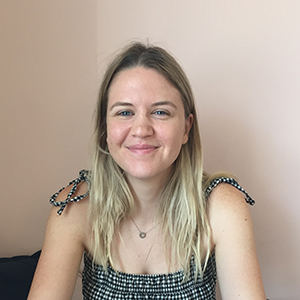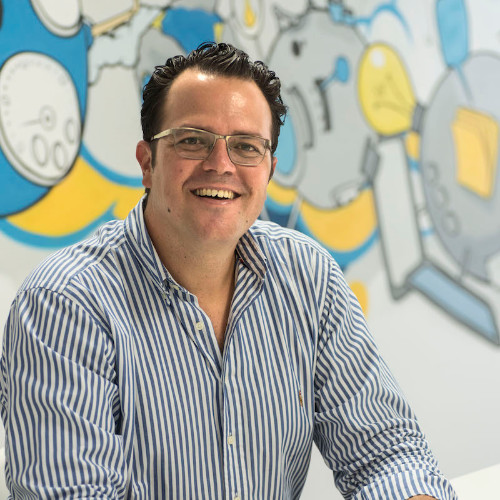Earlier this year ShieldGEO teamed up with Virtual Not Distant to produce a short podcast series unpacking the topic of connection and disconnection within remote teams. I hosted the seven-part series and spoke with up to 10 guests each episode about what it means to be isolated or disconnected, and why remote workers are particularly prone to this experience. We had remote work advocates, app developers, psychologists, lawyers, researchers and CEOs of distributed teams all weigh in with their experiences and expertise.
The experience of unpacking a single topic from various angles over a few months was incredibly rewarding, and we saw how layered and complex this issue really is.
One of the prominent threads that emerged from the series was the idea of checking in with ourselves. Self-reflection was continually put forth as a way for individuals and teams to monitor moods, changes in circumstances and needs, in order to create positive, individualised solutions to the problem of disconnection. And while the podcast focused on the issue of disconnection, we soon realised reflection practices are essential for addressing any problems at all.
As we know, remote workers, by design, don’t work in a co-located office. We don’t have our teams around us or our managers nearby to quickly grab when we need them. While technology allows communication and collaboration to happen, there is still the barrier of extra effort. We have to choose to reach out and connect rather than relying on it occurring incidentally.
Where you may have easily picked up when your direct report was struggling with something in an office setting because of their visual cues — they might be getting into the office late or seem more withdrawn in conversations — you have to rely on them actively sharing with you in a remote setting. Which means they have to be able to articulate what’s going on and what they might need from you or the team to address it.
This kind of self-awareness and open communication is a skill, and while some people will naturally find it easier than others, it doesn’t mean we can’t all get better at it.
Here, I’ll share some of the ways you as a manager can facilitate self-reflection practices within your teams to develop meaningful, open and transparent relationships with your direct reports.
Create safe spaces
To promote open communication and vulnerable sharing, we first need to create safe spaces for our teams to share.
This should be a company-wide effort and is something everyone contributes to. It has a place in the kind of culture you want to create, the people you ultimately hire and all the tiny details that make up the day-to-day work experience at your organisation.
Marcus Wermuth, an engineering manager at Buffer, argues that creating psychological safety for your teams is a large part of the process.
“There’s also responsibility for the individuals to try and share and bring it up if they can, but ultimately that comes back to — is the culture safe? Is it psychologically safe that people will bring those things up?” He shares in the fourth episode of Connection and Disconnection in Remote Teams.
“It’s probably a lot of responsibility on us and maybe just a short amount on the individual team members.”
What feels safe to your teammates will likely be individual to them, but there are a few things you can do to lay the foundation.
Leading by example
Potentially the best way to create a safe space for sharing is to lead by example and showcase the practice of reflecting, noticing and sharing, yourself.
“The thing that has the greatest impact is acknowledging [something] as a potential issue and being able to talk about it,” Shield’s co-founder Tim Burgess said in the podcast series.
“For me, that means modelling that behaviour, talking about my own personal experience and that we want to try and help.”
He says that normalising issues makes everyone feel safer and more likely to talk about something if and when it becomes an issue.
Create spaces for sharing ideas
You may also wish to create a physical space for sharing, as this shows your team you value their input and ideas in a remote setting. That might be a channel on Slack, a portion of your all-hands meeting or a regular Typeform.
At Shield, our #ideas channel is a place for anyone to post suggestions, comments, queries and concerns. It’s often a place where ideas for process changes and updates originate and many of our tech team’s projects will come from an idea posted in the channel.
It’s a place where the rest of the team can comment, react and continue brainstorming on the original idea. Crucially, it keeps these ideas visible and in one place, which makes it easy when we want to implement any of the suggestions. By taking on the team’s input, it shows we value each person’s ideas and that sharing is a positive experience.
We encourage team input in a number of other areas too. For example, when we created our company values, we had group calls with each time zone to brainstorm ideas and hear how each team member had experienced or seen our values in action. We also recently ran an exercise where the entire Shield team evaluated a piece of collateral and suggested improvements, changes and things we’d keep in a revised edition. There are several other examples too, each compounding to create an environment where sharing is a positive, encouraging and uplifting experience. Everyone is heard, appreciated, and suggestions are genuinely taken on board for future improvements.
Of course, one-on-one meetings is probably the best example of creating space to reflect and share. Whether you have your meetings weekly, bi-weekly or monthly, setting aside regular time with your direct reports to talk through where they’re at, whether they’re struggling with anything and assess their progress shows that you’re invested in their growth and wellbeing.
Repetitive questions
Most people will find it easier to respond to questions than come up with meaningful topics to share themselves.
By asking the same or similar questions at regular intervals, we can encourage the practice of reflecting. It also has the added benefit of helping us notice change over time. For example, perhaps last week, I was struggling to get through my task list, but this week I’m feeling on top of it all. If I am asked each week how I’m handling my to-do list, I’m led to think about what’s changed. If I’m doing something different this week, this process might lead me to implement that into my routine in the future.
Of course, some people may automatically think this way. Still, by asking the question, you jump start that reflective practice and capture any team members who may struggle to think critically about their own habits.
You can ask these questions in your one-on-one meetings, at the end of projects or through helpful software like Know Your Team or Headlamp.
Incorporating this act of reflecting and noticing changes is something that will be useful in many areas of our lives. It helps us discover the real root cause of our issues instead of impulsively responding to the symptoms.
“That cycle of noticing what’s going on in yourself then trying to work out what you need and ways to get that is so important,” Tim said in one of the podcast episodes.
He makes a case for continually revisiting topics, even after you feel as though you’ve solved a problem.
“What works for you when you’re 25 might not work when you’re 30, 35, 65, 70.”
Getting through your to-do-list each day may have been incredibly easy when you were working on one particular project, but things changed when you switched to a new department or became a parent or after working in the same area for five years.
By reflecting on what’s changed, asking yourself what you need now and experimenting with new practices, you’ll be able to solve these new issues as they arise over your career.
Software and tools
Using tools and software to make the questioning process easier is something I definitely recommend.
There are countless additions to your current practice from simple note-taking tools all the way through to integrated software that can elevate your experience and make reflecting and improving a seamless part of everyday life.
At Shield, we use a software called Know Your Team to ask three company questions weekly. Every Monday KYT sends all team members a question about their week ahead, what they have scheduled and how they feel about it. We’ve integrated the software into Slack and email so our team can choose where they prefer to answer. Having the Slack integration means others can easily interact, comment and follow up with further questions without having to use another program. On Wednesday’s and Friday’s, we have different questions which the team submit ahead of time. It’s a good place to ask for feedback on company processes or culture as well as get to know our team better by asking more community focussed questions.
We’ve found KYT helps create that safe space for sharing and interaction that isn’t always apparent when everything is task focussed. The Monday question is also an easy way to encourage our team to continually think about their week, how they feel about it and pause to think about why. Sometimes people just need an outlet to express to help shape future planning.
Brian Rhea , a product engineer, just launched Headlamp — an app to help teams monitor feelings of loneliness and isolation by asking regular repetitive questions.
It asks teams to rate how they’re feeling using a red, orange or green scale and collates this data over time. The data is shared with managers to help give an indication of who in the team may need some extra support and who is currently thriving. Of course, this kind of data is incredibly helpful for remote managers; however, it’s also an excellent tool for the individuals themselves to start thinking about how they feel each day and what could be impacting those changes.
Collect data
Workplace psychologist Richard Mackinnon says that it’s not just about asking the questions — it’s capturing the answers so you can reflect on progress and change over time.
“If you want to make changes, it’s good to have some data to look back on,” he says
He suggests journaling; however, there are plenty of apps, programs and exercise handbooks that can all help facilitate an ongoing reflective practise for individuals.
Unless we capture what’s happening for us regularly, we might not realise the gradual changes until we’re in a difficult position.
From a manager’s perspective, I would suggest you take the time to make notes. Whether you like to jot down dot points, create spreadsheets or use software like Headlamp, taking note of things your teammates bring up in conversation or changes you may have noticed can help you follow up with them later. Always give yourself time after one-on-one meetings to write down some key points, so you don’t forget what was brought up and do the same if anything else comes up throughout the week. If you use an agenda program already, you can make notes for the next meeting there already or set them as action points to follow up on.
By making notes or using software, it means you don’t have to have an incredible memory to be a good manager or even have advanced intuition skills. The added benefit is that it actually helps you become more aware of what your teams are sharing and the many little changes that might occur because it gives you a task to do with that information. Even if you jot down one thing, it means you have a question to ask in your next one on one, and means you can learn more about your direct reports and genuinely check in to offer support where they need it. By doing this, you’ll avoid super open-ended questions like, ‘So…how was your week?’ and shows that you genuinely care about them as individuals.
Conclusion
In summary, self-reflection is an incredible tool that can help us learn more about ourselves, track changes over time and implement solutions that will really work for us. While the practice is largely personal, managers can still implement strategies to help encourage their team to start thinking in these ways to help recognise problems, communicate effectively, and ask for support when necessary. This is particularly important in remote or distributed teams as we can’t easily rely on visual cues to notice when things might be going awry. By creating safe spaces by being vulnerable ourselves and encouraging those who do share, asking repetitive questions in regular meetings or through apps and collecting data through note taking, we can guide our teams through reflective practices that will have long-standing positive impacts in the workplace and beyond.







